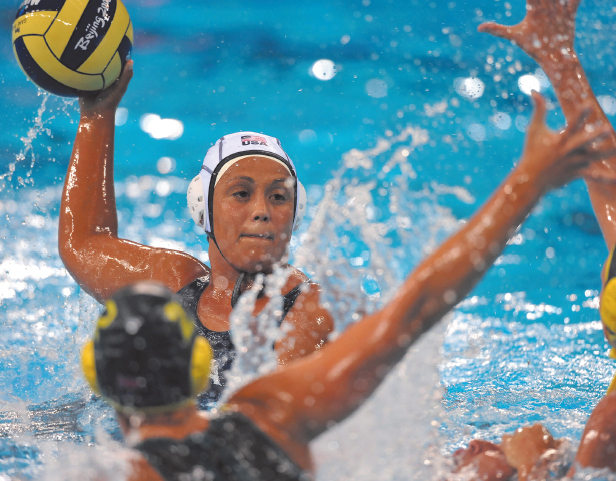10. RELATIONSHIPS WITH FAMILY MEMBERS
Printed Page 320
10. RELATIONSHIPS WITH FAMILY MEMBERS

Families have a primacy that no other relationships rival
She's one of the greatest water polo players ever.1 She is an NCAA Women's Player of the Year, a 2012 Olympic gold medalist, a three-time World Champion, and a World Cup Champion. But when Brenda Villa is asked about her abilities and accomplishments, she is quick to credit her family, especially her mother. "I get my confidence and 'swagger' from my mom. She's one tough woman. She always supports me, but is unafraid to tell me when I'm not being humble."
Brenda grew up in Commerce, California—a working-class suburb of Los Angeles. At a young age, her mother enrolled her in swimming classes. Brenda excelled, and gravitated to water polo after seeing her older brother, Edgar, compete. Although her parents had no experience with the sport, they encouraged Brenda's interest. "They taught me that you should always be open to new things."
Growing up, four themes were foundational in the Villa family: support, honesty, sacrifice, and love. As Brenda describes, "Both my parents worked full-time. Yet they were at all my swim meets, water polo games, school activity nights, and assemblies. They knew that I was committed to both school and sports, and they supported me in every way so that I could achieve my goals." Her parents are also scrupulously honest with her, in good times and bad. "They know when I need a kick in the butt and when I need someone to listen. Recently I was feeling sorry for myself after missing a penalty shot at a tournament. My mother found out from my boyfriend, and the next thing you know I get a comforting text message from my dad and a phone call from my mom. She reminded me that it's my choice to continue to play and if I'm going to dwell on mistakes that I shouldn't play anymore. She wants me to be the champion I am—no fear. Gotta love her!"
The Villa family is always willing to sacrifice for one another. For example, Brenda's training camps for the U.S. Team were in Chula Vista—a two-hour commute from Commerce. Her parents drove her, without debate or resentment. As Brenda describes, "I don't remember asking my parents to do this—they just did it. And I never realized how hard it was for them. My mother would accompany my dad because she was afraid he would fall asleep on the drive home. I didn't appreciate the depth of their sacrifice at the time, as a kid, but now that I'm older, I'm so thankful that they put me first." The willingness to sacrifice communicated a powerful message of love. "Their love is unconditional. It warms my heart to think that my mom would accompany my dad just to keep him awake. That's love!"
Though she's one of America's most talented and celebrated female athletes, Brenda Villa remains humble about her accolades. As the Women's Sports Foundation notes, "[Brenda] seems unaware of the splash she has made as role model and hero to Latina athletes. Maybe she's just too busy and too modest by nature" (Lewellen, 2008). But the truth is, Brenda doesn't think of herself as role model—she thinks of her parents that way. "I look at their 30-plus years of marriage and how they still always put their kids first. I hope to be as selfless as them with my own children."
Families have a primacy that no other relationships rival. Family members are the first people we see, hear, touch, and interact with. As we grow from infancy to childhood, we learn from family the most basic of skills: how to walk, talk, feed, and clothe ourselves. As we develop further, our families teach us deeper lessons about life akin to those learned by Brenda Villa from her parents: the importance of support, honesty, sacrifice, and love. As our relationships broaden to include friendships and romances, we still use kinship as a metaphor to describe closeness: "How close are we? We're like family!" (Rubin, 1996). But family relationships are also compulsory. We don't choose our families—we are brought into them by birth, adopted into them by law, or integrated into them by remarriage. When problems arise in our family relationships, the stress is unrivaled. One survey of adults found that the greatest source of emotional strain the preceding day was "family" (Warr & Payne, 1982). When the same sample was asked to name the greatest source of pleasure from the previous day, the answer was identical: "family." Day in and day out, family relationships provide us with our greatest joys and most bitter heartaches (Myers, 2002).
In this chapter, we look at the most influential and enduring of our close involvements: family relationships. You'll learn:
- The defining features of family
- The different ways in which families communicate
- Communication strategies to maintain healthy family relationships
- Challenges that families face, and how to manage them
outline
chapter outline
323
329
333
341
349